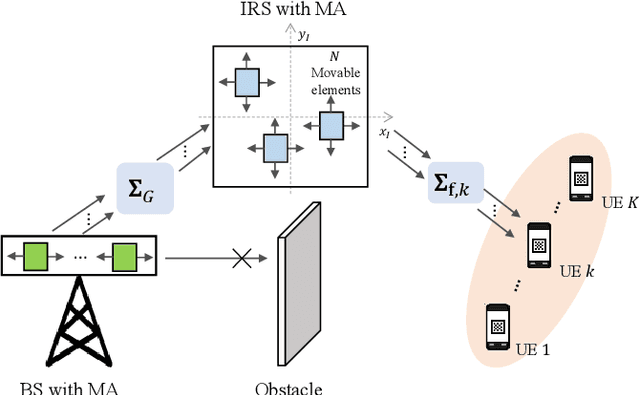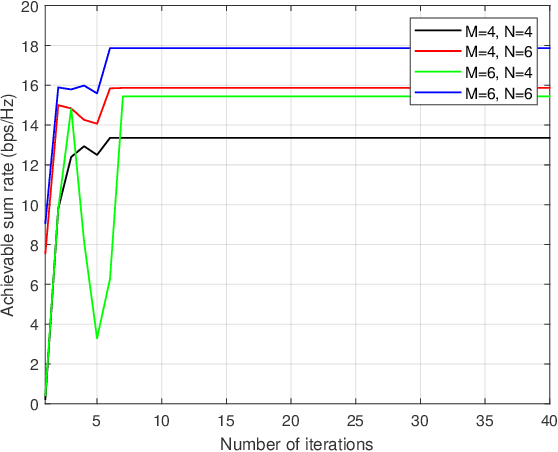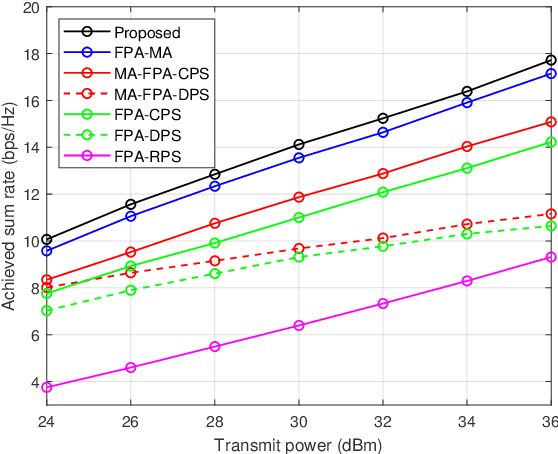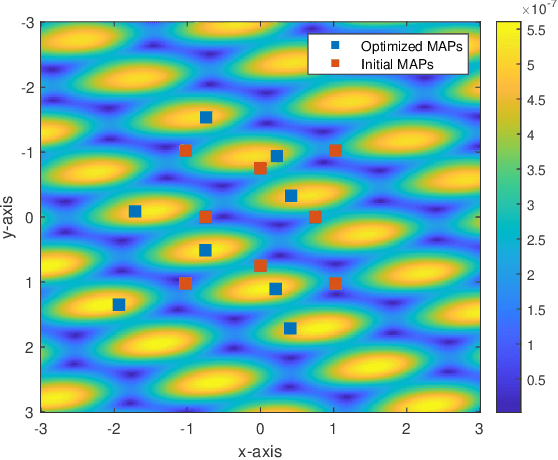Tee Hiang Cheng
Joint Beamforming and Antenna Position Design for IRS-Aided Multi-User Movable Antenna Systems
Oct 01, 2024



Abstract:Intelligent reflecting surface (IRS) and movable antenna (MA) technologies have been proposed to enhance wireless communications by creating favorable channel conditions. This paper investigates the joint beamforming and antenna position design for an MA-enabled IRS (MA-IRS)-aided multi-user multiple-input single-output (MU-MISO) communication system, where the MA-IRS is deployed to aid the communication between the MA-enabled base station (BS) and user equipment (UE). In contrast to conventional fixed position antenna (FPA)-enabled IRS (FPA-IRS), the MA-IRS enhances the wireless channel by controlling the positions of the reflecting elements. To verify the system's effectiveness and optimize its performance, we formulate a sum-rate maximization problem with a minimum rate threshold constraint for the MU-MISO communication. To tackle the non-convex problem, a product Riemannian manifold optimization (PRMO) method is proposed for the joint design of the beamforming and MA positions. Specifically, a product Riemannian manifold space (PRMS) is constructed and the corresponding Riemannian gradient is derived for updating the variables, and the Riemannian exact penalty (REP) method and a Riemannian Broyden-Fletcher-Goldfarb-Shanno (RBFGS) algorithm is derived to obtain a feasible solution over the PRMS. Simulation results demonstrate that compared with the conventional FPA-IRS-aided MU-MISO communication, the reflecting elements of the MA-IRS can move to the positions with higher channel gain, thus enhancing the system performance. Furthermore, it is shown that integrating MA with IRS leads to higher performance gains compared to integrating MA with BS.
Membrane Potential Distribution Adjustment and Parametric Surrogate Gradient in Spiking Neural Networks
Apr 26, 2023Abstract:As an emerging network model, spiking neural networks (SNNs) have aroused significant research attentions in recent years. However, the energy-efficient binary spikes do not augur well with gradient descent-based training approaches. Surrogate gradient (SG) strategy is investigated and applied to circumvent this issue and train SNNs from scratch. Due to the lack of well-recognized SG selection rule, most SGs are chosen intuitively. We propose the parametric surrogate gradient (PSG) method to iteratively update SG and eventually determine an optimal surrogate gradient parameter, which calibrates the shape of candidate SGs. In SNNs, neural potential distribution tends to deviate unpredictably due to quantization error. We evaluate such potential shift and propose methodology for potential distribution adjustment (PDA) to minimize the loss of undesired pre-activations. Experimental results demonstrate that the proposed methods can be readily integrated with backpropagation through time (BPTT) algorithm and help modulated SNNs to achieve state-of-the-art performance on both static and dynamic dataset with fewer timesteps.
 Add to Chrome
Add to Chrome Add to Firefox
Add to Firefox Add to Edge
Add to Edge